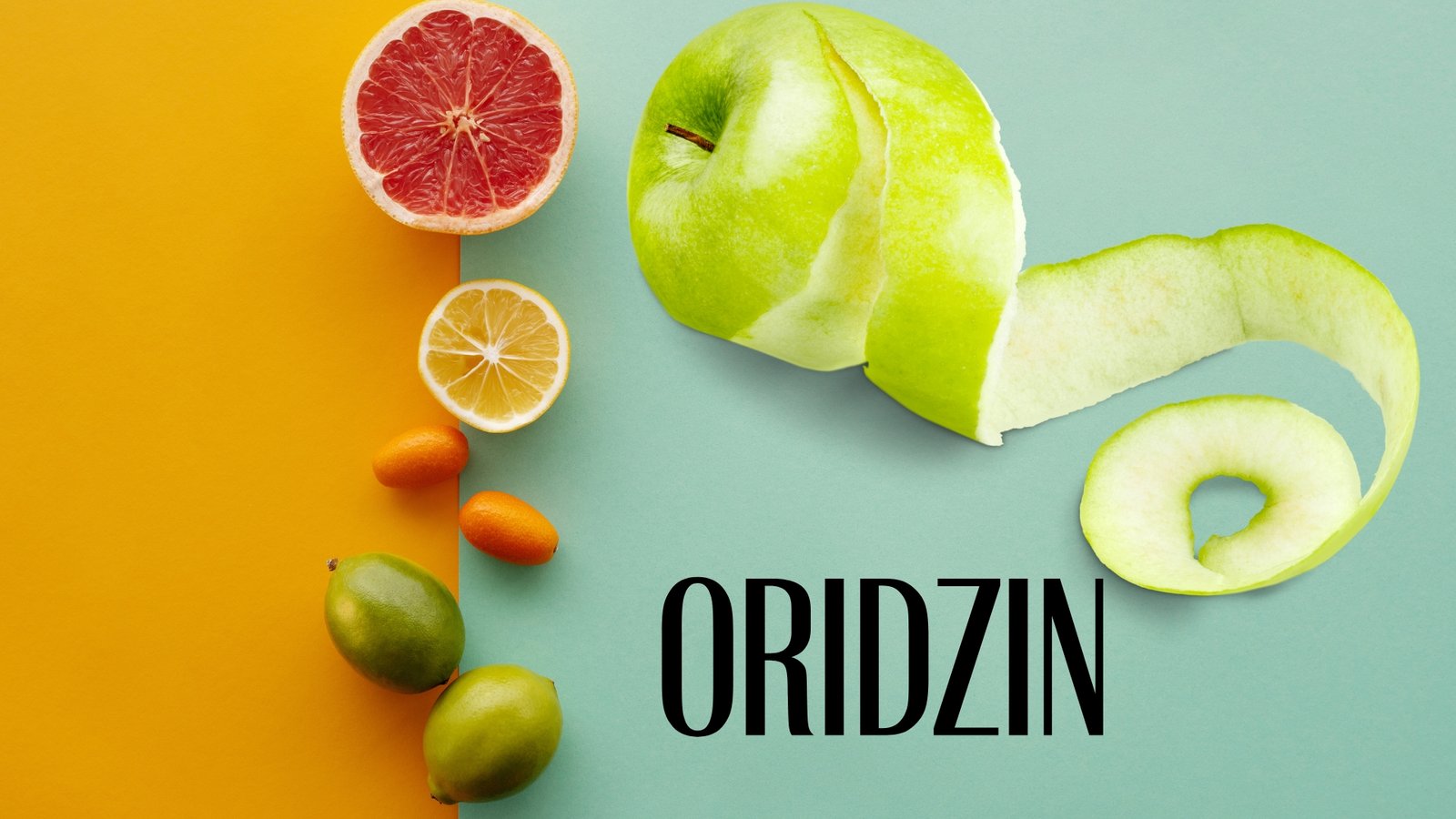Have you ever heard of oridzin, the secret flavonoid hidden in apple peels? This powerful compound, sometimes called “orientin,” is a unique phytochemical that offers many health benefits. In this blog post, we will delve into the world of oridzin, exploring its origins, health benefits, and potential future research directions. So, let’s uncover the hidden potential of oridzin and why it’s worth incorporating into your diet.
Unveiling Oridzin: What Exactly Is It?
Oridzin, a notable member of the flavonoid family, garners attention for its presence primarily within the peels of apples, though it does not limit itself to this single source. As a flavonoid, oridzin is part of a more prominent, chemically diverse family of phytochemicals that plants produce, offering vivid colors and a host of health-boosting properties. This compound stands out due to its potent antioxidant capabilities, critical in combating oxidative stress and preventing various diseases.
The significance of oridzin extends beyond its antioxidant activity; it also exhibits a remarkable array of biological activities including anti-inflammatory, anti-cancer, and anti-diabetic properties. These attributes suggest that oridzin is not just a mere component of plant matter but a potent agent with potential therapeutic applications. Its presence in apple peels sparks interest in the broader implications of dietary choices and the hidden nutritional values in parts of fruits often discarded.
Exploring oridzin’s structure reveals it as a type of flavone, a specific category within the flavonoid family known for its double phenyl structure and capacity to absorb UV light, which likely contributes to its protective roles in plants. This translates to a powerful ally in human health maintenance and disease prevention, as evidenced by various studies that have begun to elucidate the mechanisms behind its beneficial effects.
Understanding oridzin’s multifaceted role in plant biology and human health invites a deeper appreciation for the complexity of natural compounds and their potential to contribute positively to dietary and medicinal practices. As research progresses, the benefits associated with oridzin continue to unfold, promising to reveal even more about its capacities to support health and prevent disease.
The Natural Sources of Oridzin – Beyond Apple Peels
While the vibrant peels of apples are a renowned reservoir of oridzin, this exceptional flavonoid can be sourced from a broader palette of natural foods, thereby diversifying how we can enrich our diets with its potent health benefits. With their soft, edible skins, Pears offer a sweet avenue to ingest oridzin. Similarly, with their deep red hue, cherries not only tantalize the taste buds but also serve as a fruitful source of this phytochemical powerhouse. Citrus fruits, including oranges and lemons, add to this colorful spectrum, their zest and peels imbuing dishes with flavor and a healthful boost of oridzin.
Venturing beyond the realm of fruits, the vegetable kingdom also harbors oridzin in its folds. Onions, with their layers of nutritional value, and broccoli, a cruciferous vegetable known for its dense nutritional profile, stand out as significant vegetable sources. These everyday ingredients, often overlooked for their therapeutic potential, are valuable allies in the quest for a balanced diet rich in flavonoids like oridzin.
It’s worth noting that the concentration of oridzin varies among these sources, influenced by factors such as the plant’s growing conditions, ripeness at harvest, and subsequent storage. Thus, integrating a variety of these fruits and vegetables into one’s diet ensures a broader intake of oridzin and other complementary nutrients that collectively contribute to overall health and wellness.
Embracing these natural sources of oridzin encourages a culinary exploration beyond taste, delving into the nutritional essence of what we eat. By valuing the whole fruit or vegetable, including parts often discarded, we open ourselves up to the full potential of what nature has to offer in nurturing our health.
The Health Benefits of Oridzin – Science-Backed Insights
Oridzin has garnered significant attention in scientific circles for its robust health-promoting properties. Groundbreaking research underscores its role in mitigating inflammation, a common denominator in several chronic conditions. This attribute of oridzin is particularly crucial, as chronic inflammation is implicated in the pathogenesis of diseases like cardiovascular disorders and rheumatoid arthritis. By modulating the body’s inflammatory response, oridzin can alleviate symptoms and reduce the prevalence of these conditions.
In the realm of oncology, oridzin exhibits promising anti-cancer properties. Preliminary studies suggest that this flavonoid can interfere with the proliferation of cancer cells, inducing apoptosis, or programmed cell death, in various types of cancer. This mechanism presents a hopeful avenue for developing more targeted and less toxic cancer therapies, highlighting oridzin’s significance in the future of oncological treatment strategies.
Moreover, the impact of oridzin on metabolic health is of considerable interest, particularly its influence on diabetes management. Its ability to enhance insulin sensitivity and modulate blood glucose levels offers a natural adjunctive approach to diabetes care. By improving metabolic parameters, oridzin supports the body’s natural regulation of blood sugar, thereby contributing to the prevention and management of diabetes.
The antioxidant capacity of oridzin also merits attention. By neutralizing free radicals, this flavonoid combats oxidative stress, a factor in the aging process and the development of numerous diseases. Its antioxidant activity supports cellular health and bolsters the body’s defense against environmental stressors and pathogens.
These science-backed insights into oridzin’s health benefits illuminate its potential as a natural compound with wide-ranging therapeutic applications. As research continues to evolve, the scope of oridzin’s impact on health and disease prevention expands, offering exciting prospects for integrating this flavonoid more comprehensively into health and wellness paradigms.
Incorporating Oridzin into Your Diet – Practical Tips
There are several practical and enjoyable methods for those intrigued by the benefits of oridzin and keen to incorporate this flavonoid into their daily regimen. Begin by embracing the habit of consuming the peels of fruits, particularly apples, where oridzin is richly present. This simple step ensures you’re getting all the flavonoid abundance offered by nature.
Venturing into the kitchen, consider crafting dishes incorporating oridzin-rich fruits and vegetables as key ingredients. A vibrant salad featuring citrus zest, thinly sliced pears, and cherries can be a delightful and nutritious addition to your meals. Similarly, integrating onions and broccoli into your recipes elevates the flavor profile of dishes and significantly boosts your oridzin intake.
Creative culinary experiments, such as making homemade apple peel tea or adding finely grated citrus peel to dressings and marinades, can offer novel ways to enjoy the benefits of oridzin. These minor but impactful culinary tweaks can seamlessly integrate more of this potent flavonoid into your diet.
Opting for high-quality products and consulting with a healthcare professional to ensure they fit into your overall health strategy is vital for those considering supplements. However, prioritizing whole food sources over supplements can provide a broader spectrum of nutrients and promote overall well-being.
Expanding your dietary palette to include a diverse range of oridzin-containing foods not only supports your health with this specific flavonoid but also introduces a variety of other beneficial phytochemicals and nutrients to your diet. This holistic approach to nutrition can pave the way for a healthier lifestyle, enriched by the natural goodness of oridzin and its host of health benefits.
Must Read: Stay in the Loop with Dhamaka Zone Celebrity Gossip
The Future of Oridzin Research – What’s Next?
The horizon of oridzin research is expanding, promising a wealth of new insights into how this flavonoid might shape future health interventions. With its proven array of benefits, from anti-inflammatory to anti-cancer properties, the scientific community is eager to dive deeper into the mechanisms that underpin these effects. One area of particular interest is the potential for oridzin to contribute to neuroprotective strategies. Given the increasing prevalence of neurodegenerative diseases, understanding how oridzin can mitigate such conditions could open the door to groundbreaking preventative measures and treatments.
Another promising avenue involves the exploration of oridzin’s role in gut health. Preliminary studies have hinted at the flavonoid’s capacity to influence the gut microbiome, suggesting it may offer a natural way to enhance digestive health and, by extension, immune function. This line of inquiry could redefine approaches to nutrition and wellness, highlighting the interconnectedness of diet, gut health, and overall well-being.
Cardiovascular health is also under the microscope, with researchers examining how oridzin’s antioxidant and anti-inflammatory properties might offer protection against heart disease. By dissecting the flavonoid’s impact on cholesterol levels, blood pressure, and arterial health, scientists are seeking to uncover a more holistic understanding of cardiovascular prevention.
Finally, the adaptability of oridzin to different delivery methods, including functional foods, supplements, and even pharmaceuticals, is a key focus. Developing more effective ways to incorporate oridzin into daily life could significantly enhance its accessibility and impact on public health.
In essence, the future of oridzin research is vibrant and varied, potentially influencing health outcomes significantly. As we explore this flavonoid’s full capabilities, we edge closer to harnessing its power in more effective, targeted ways, promising a healthier future for all.











Leave a Reply